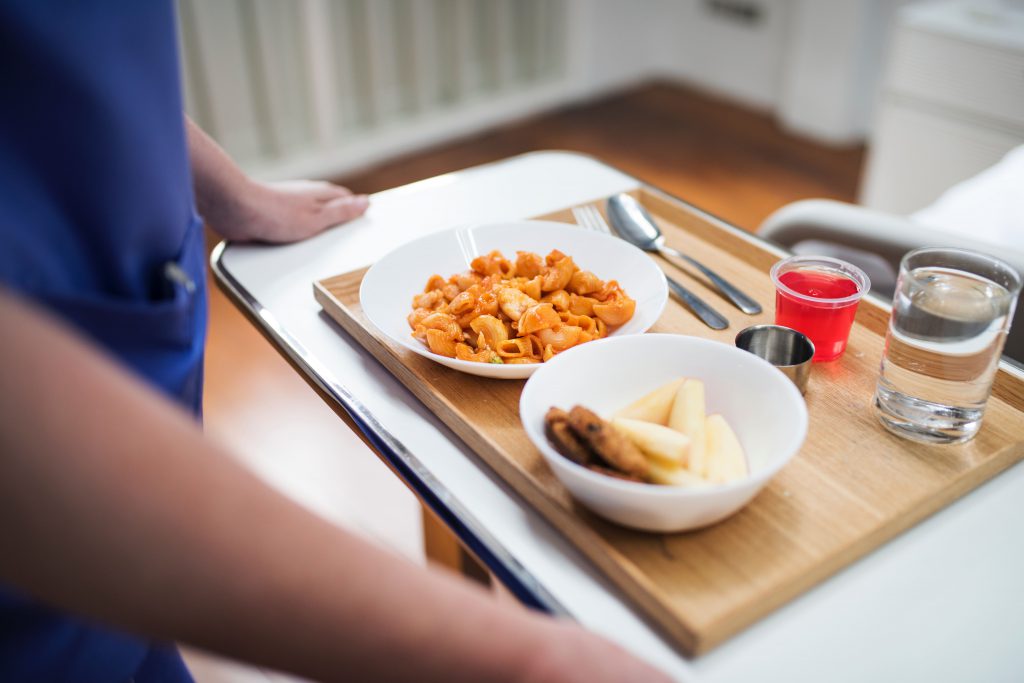
The battle of administration and nurses on the consumption of food and beverages at nursing stations in healthcare facilities has been ongoing for years; because of the possibility of contamination of bloodborne pathogens and/or other potentially infectious materials. I’ve recently been asked if the Occupational Safety and Health Administration (OSHA) sets a standard on consumption of food and beverages at nursing stations. While some employees may state that beverages at the nursing station have a lid or cover, the container may also become contaminated, resulting in unsuspected contamination of the hands.
According to the Centers for Disease Control and Prevention (CDC),
“The estimated risk of HIV infection from a sharps injury is about 0.3 percent (1 in 300). The CDC has reported 57 documented cases and 140 possible cases of HIV transmission to U.S. healthcare workers between 1981 and December 2006. Of the 57 documented cases, 48 were associated with percutaneous injury (puncture/cut injury). Most of these cases involved nurses and lab technicians.
National hepatitis surveillance data shows that approximately 400 health care workers became infected with HBV in 2001. This figure represented a decline from the 17,000 new infections estimated in 1983. The decline was largely due to the widespread immunization of healthcare workers with hepatitis B vaccine and the use of universal precautions and other measures required by OSHA. The total acute HCV infections that have occurred annually (ranging from 100,000 in 1991 to 36,000 in 1996), have been health care workers exposed to blood in the workplace.”
Although these diseases mentioned are highly unlikely to spread when proactive infection control is practiced; diseases including but not limited to Staph, Hep A, Salmonella, and C. difficile also have a possibility of spreading via ingestion.
OSHA’s Stance
After investigation, it’s clear that the OSHA does not have a specific standard addressing consumption of food and beverages at nursing stations. However, OSHA’s bloodborne pathogens standard (29 CFR 1910.1030(D)(2)(ix)) states,
“Eating, drinking, smoking, applying cosmetics or lip balm, and handling contact lenses are prohibited in work areas where there is a reasonable likelihood of occupational exposure.”
The following standard (29 CFR 1910.1030(D)(2)(x)) states,
“Food and drink shall not be kept in refrigerators, freezers, shelves, cabinets, or on countertops or benchtops where blood or other potentially infectious materials are present.”
Also, under OSHA’s General Environmental Controls standard (29 CFR 1910.141(g)(2)),
“Eating and drinking areas. No employee shall be allowed to consume food or beverages in a toilet room nor in any area exposed to a toxic material.”
Under the General Duty Clause of the United States Occupational Safety and Health Act it is the employer’s responsibility to It is the employer’s responsibility to perform risk and hazard assessments to evaluate the workplace in determining which locations food or beverages have the potential to become contaminated and must then forbid consumption in these areas. Each employer:
- Shall furnish to each of his employees’ employment and a place of employment which are free from recognized hazards that are causing or are likely to cause death or serious physical harm to his employees
- Shall comply with occupational safety and health standards promulgated under this Act.
- Each employee shall comply with occupational safety and health standards and all rules, regulations, and orders issued pursuant to this Act which are applicable to his own actions and conduct.
What Areas are Exposed to Toxic Materials?
Although no OSHA standard requires that an employer achieves this, employers may allow employees to eat and drink in work areas that are considered safe to do so. Areas that employers determine to be safe for consumption of food and beverages must be separated from areas subject to contamination and must be situated so that the potential of exposure to food, beverages, and their containers are minute.
The key piece of every risk assessment is the determination of severity and whether blood or other potentially infectious materials are present. A quick survey of the nursing stations, focusing on where staff keep the specimens rather than whether they consume food and drink will help to identify the level of the exposure risk, not whether there are activities that would contribute to increasing the risk. This is more efficient because if employees are notified you’re observing for beverage consumption in work areas, they may try and hide it from you; whereas if employees receive notification you’re looking to see how they manage specimens, you’re likely to get more accurate results.
Remember OSHA standards set minimum safety and health requirements and do not forbid employers from implementing more stringent requirements to benefit the safety of employees.
Employer Responsibilities
The most efficient way to minimize risk of every hazard is to be proactive and control the hazard. Below are the responsibilities of employers set by OSHA.
- Establish an exposure control plan (update annually required by OSHA).
- Implement the use of universal precautions.
- Identify and use engineering controls.
- Identify and ensure the use of work practice controls.
- Provide personal protective equipment, such as gloves, gowns, eye protection, mask, and face shields.
- Make available hepatitis B vaccinations to all workers with occupational exposure.
- Make available post-exposure evaluation and follow-up to any occupationally exposed worker who experiences an exposure incident.
- Use labels and signs to communicate hazards.
- Provide information and training to workers.
- Maintain worker medical and training records.
